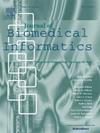MedicalGLM: A Pediatric Medical Question Answering Model with a quality evaluation mechanism
IF 4
2区 医学
Q2 COMPUTER SCIENCE, INTERDISCIPLINARY APPLICATIONS
引用次数: 0
Abstract
Objective:
Large Language models (LLMs) have a wide range of medical applications, especially in scenarios such as question-answering. However, existing models face the challenge of accurately assessing the quality of information when generating medical information, which may lead to the inability to effectively distinguish beneficial and harmful information, thus affecting the quality of question-answering. This study aims to improve the information quality and practicability of medical question-answering.
Methods:
This study proposes MedicalGLM, a fine-tuning model based on a quality evaluation mechanism. Specifically, MedicalGLM contains a reward model for assessing the quality of medical QA. It adjusts its training process by returning the assessment scores to the QA model as penalties through a quality score loss function.
Results:
The experimental results indicate that MedicalGLM achieved the highest scores among the evaluated models in the Rouge-1, Rouge-2, Rouge-L, and BLEU metrics, with values of 54.90, 28.02, 44.50, and 32.61, respectively. Its proficiency in generating responses for the pediatric medical quiz task is notably superior to other prevailing LLMs in the medical domain.
Conclusion:
MedicalGLM significantly improves the quality and practicability of the generated information of the medical question-answering model by introducing a quality evaluation mechanism, which provides an effective improvement idea for researching medical large language models. Our code and model are publicly available for further research on https://github.com/wangxinwwang/MedicalGLM.

MedicalGLM:一个带有质量评价机制的儿科医学问答模型。
目的:大型语言模型(LLMs)具有广泛的医学应用,特别是在问答等场景中。然而,现有模型在生成医疗信息时面临着信息质量的准确评估的挑战,这可能导致无法有效区分有益信息和有害信息,从而影响问答质量。本研究旨在提高医学问答的信息质量和实用性。方法:本研究提出了基于质量评价机制的MedicalGLM微调模型。具体来说,MedicalGLM包含一个用于评估医疗质量保证质量的奖励模型。它通过质量分数损失函数将评估分数作为惩罚返回给QA模型,从而调整其训练过程。结果:实验结果显示,在被评价模型中,MedicalGLM在Rouge-1、Rouge-2、Rouge-L和BLEU指标上得分最高,分别为54.90、28.02、44.50和32.61。它在为儿科医学测验任务生成答案方面的熟练程度明显优于医学领域的其他主流法学硕士。结论:MedicalGLM通过引入质量评价机制,显著提高了医学问答模型生成信息的质量和实用性,为医学大语言模型的研究提供了有效的改进思路。我们的代码和模型是公开的,可以在https://github.com/wangxinwwang/MedicalGLM上进一步研究。
本文章由计算机程序翻译,如有差异,请以英文原文为准。
求助全文
约1分钟内获得全文
求助全文
来源期刊

Journal of Biomedical Informatics
医学-计算机:跨学科应用
CiteScore
8.90
自引率
6.70%
发文量
243
审稿时长
32 days
期刊介绍:
The Journal of Biomedical Informatics reflects a commitment to high-quality original research papers, reviews, and commentaries in the area of biomedical informatics methodology. Although we publish articles motivated by applications in the biomedical sciences (for example, clinical medicine, health care, population health, and translational bioinformatics), the journal emphasizes reports of new methodologies and techniques that have general applicability and that form the basis for the evolving science of biomedical informatics. Articles on medical devices; evaluations of implemented systems (including clinical trials of information technologies); or papers that provide insight into a biological process, a specific disease, or treatment options would generally be more suitable for publication in other venues. Papers on applications of signal processing and image analysis are often more suitable for biomedical engineering journals or other informatics journals, although we do publish papers that emphasize the information management and knowledge representation/modeling issues that arise in the storage and use of biological signals and images. System descriptions are welcome if they illustrate and substantiate the underlying methodology that is the principal focus of the report and an effort is made to address the generalizability and/or range of application of that methodology. Note also that, given the international nature of JBI, papers that deal with specific languages other than English, or with country-specific health systems or approaches, are acceptable for JBI only if they offer generalizable lessons that are relevant to the broad JBI readership, regardless of their country, language, culture, or health system.
 求助内容:
求助内容: 应助结果提醒方式:
应助结果提醒方式:


